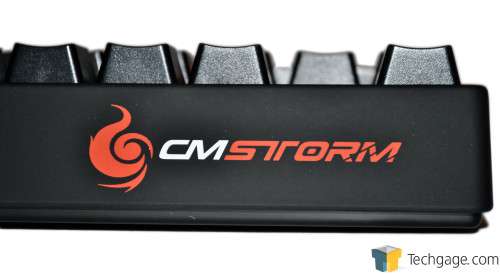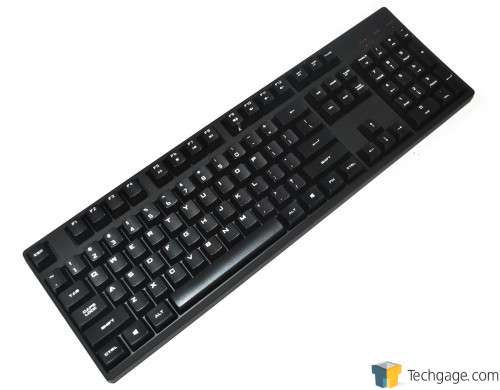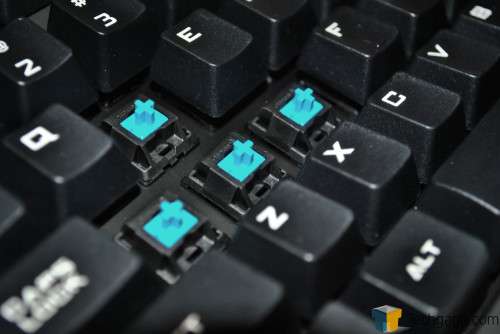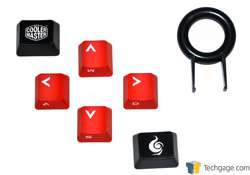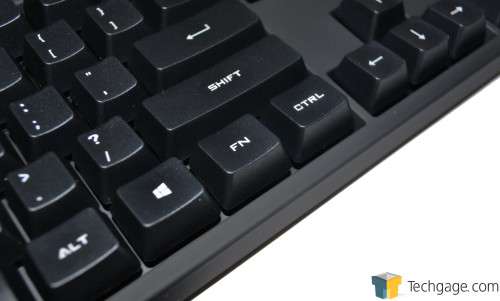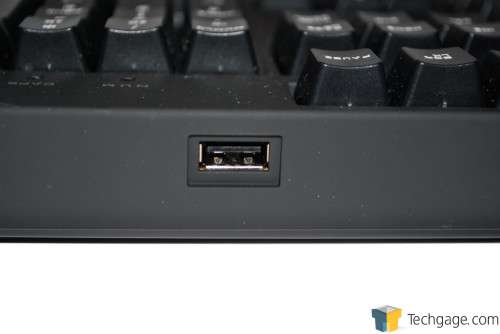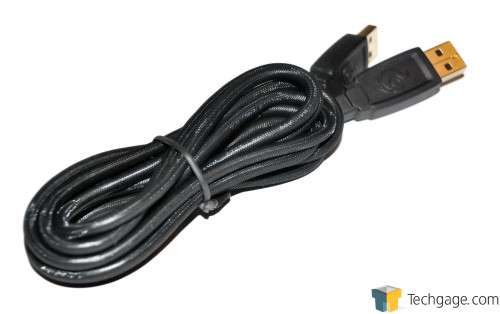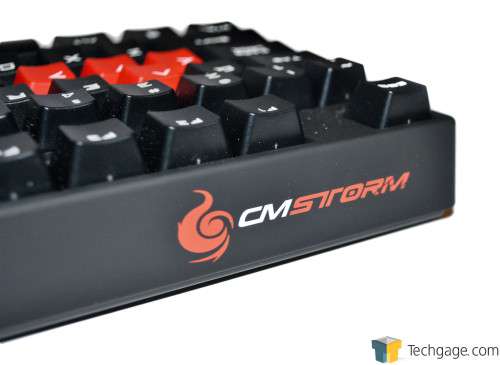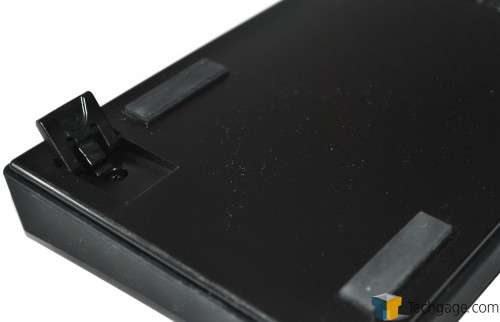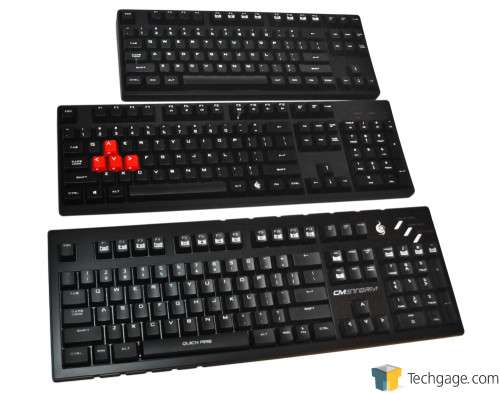- Qualcomm Launches Snapdragon 4 Gen 2 Mobile Platform
- AMD Launches Ryzen PRO 7000 Series Mobile & Desktop Platform
- Intel Launches Sleek Single-Slot Arc Pro A60 Workstation Graphics Card
- NVIDIA Announces Latest Ada Lovelace Additions: GeForce RTX 4060 Ti & RTX 4060
- Maxon Redshift With AMD Radeon GPU Rendering Support Now Available
CM Storm QuickFire XT Mechanical Keyboard Review

When Cooler Master introduced its QuickFire Rapid last year, it seemed like it was a near-perfect mech. The only thing that let it down in some people’s eyes was the lack of a numpad, but now, a couple of years later, the company has addressed that with its latest offering, the QuickFire XT. Join us as we put it through its paces.
Page 1 – Introduction
There’s no question that Cooler Master, through its gaming-oriented Storm brand, has one of the largest and most diversified product lines around when it comes to mechanical keyboard offerings. Even if you ignore the fact that most of its current offerings are available in a selection of the various Cherry MX switch types, CM Storm has (starts counting fingers) six different models of mechanical keyboard if you count via distinct model numbers.
The new QuickFire XT is just the latest to join the line-up.
Just as we mentioned in our news item from earlier this month, you can look at the new QuickFire XT as a QuickFire Rapid with a 10-key number pad added. As far as this reviewer is concerned, this is what Cooler Master should have issued straight out of the gate as its debut model in the mechanical keyboard marketplace. On the other hand, I do understand why the company issued the compact QuickFire Rapid sans 10-key pad instead: Its follow-up models, the QuickFire Pro and the Trigger, are both full-size planks. Product diversity aids marketing and promotes better sales, I guess.
But CM Storm’s newest mechanical keyboard is more than just a retooled product with a feature added back (albeit a very essential one for a lot of people). I don’t own a QF Rapid, but I have sampled one. It’s obvious that it’s an excellent keyboard, but comparing it with the new QF XT is like comparing tigers to lions (instead of, say, a Bengal tiger to a Sumatran tiger). The QuickFire XT is a different cat altogether compared to its older, 10-key-less sibling. Maybe it’s even more appropriate to consider them cousins than sisters.
Let’s take a look at the QF XT, then.
As you can see, the QuickFire XT is a full-sized keyboard, with a standard 104-key count. I love the smart, no-frills, no-nonsense matte black aesthetic. I also quite adore the fact that overt branding seems to have been kept to a minimum on the QuickFire XT’s most visible surfaces.
Our review sample is equipped with Cherry MX Blue key switches. This, then, is my first CM Storm mechanical keyboard fitted with this, my favorite type of Cherry MX switch.
As with the QF Rapid (Green Switch) I reviewed, the QF XT has replacement keycaps for the WASD cluster. The photo above shows those snazzy caps installed. There are also two extra replacement keycaps featuring the Cooler Master logo and the CM Storm logo; these two extra key caps can replace the Ctrl, Alt, Fn, and Win keys on the bottom row, if you wish. A key cap puller is included, too.
This keyboard has no special keys, except for a “Fn” key. This key is a function modifier; when pressed simultaneously with one of eight Function keys (F5 – F12) it enables some special commands.
Speaking of those special command keys, here is a look at them. Like the rest its CM Storm mechanical keyboard kin, the QuickFire XT has Function keys that double as multi-media shortcuts (that is, except for the F9 key). F5 is Play/Pause; F6 is Stop; F7 is Previous Track; F8, Next Track; F9 toggles the Windows Key lock on or off (handy for when you’re gaming); F10 will Mute your PC’s sound; F11 is volume down; finally, F12 increases volume.
The new QuickFire XT is markedly different compared to the rest of the CM Storm mechanical keyboard line in one significant aspect: While it does still have a detachable USB cable, this is the first CM Storm mech that eschews the mini-USB connector on the keyboard side. Instead, it has a full-size USB connector. While I’m not a fan per se of the detachable cable feature, I think having both connectors be the same size on both ends of the cable is more convenient since it doesn’t matter which end of the cable you plug into the keyboard. The QF XT is also the first CM Storm mech that doesn’t have its USB connector on the bottom of the keyboard; instead, the connector is at the rear right of the chassis.
The cable features a very fine braided sleeve, easily one of the best looking I’ve seen. The USB connector, meanwhile, conforms to the now-established CM Storm style by being gold-plated.
In case you care about it, branding is kept to the top-left corner of the keyboard. You can only see it from the rear of the QF XT. So, yeah, the branding is loud and proud, but you can only really see it if you look at your QF XT from the back. Which means you’re probably not doing it right (or, you can somehow touch-type with your keyboard upside down; if you can, you’re a way better typist than I could ever be).
For those of you who care, here’s a shot of one of the QF XT’s feet. With its feet retracted, the keyboard stays in place quite nicely with its four rubber pads that may look diminutive, yet are still endowed with Pirelli P Zero-like levels of grip on your desk.
As a final shot, I thought it would be interesting to show how the QuickFire XT compares to two other CM Storm mechanical keyboards. On top is the QuickFire Rapid (Cherry MX Green); on the bottom is my personal QuickFire Pro. As you can see, the QF XT is a little bit smaller than the full-size QF Pro. Its aesthetics, though, are similar to the Cherry MX Green-equipped QF Rapid.
Now that we’ve given the QuickFire XT a good once-over, let’s proceed to some testing and our concluding thoughts.
Support our efforts! With ad revenue at an all-time low for written websites, we're relying more than ever on reader support to help us continue putting so much effort into this type of content. You can support us by becoming a Patron, or by using our Amazon shopping affiliate links listed through our articles. Thanks for your support!




